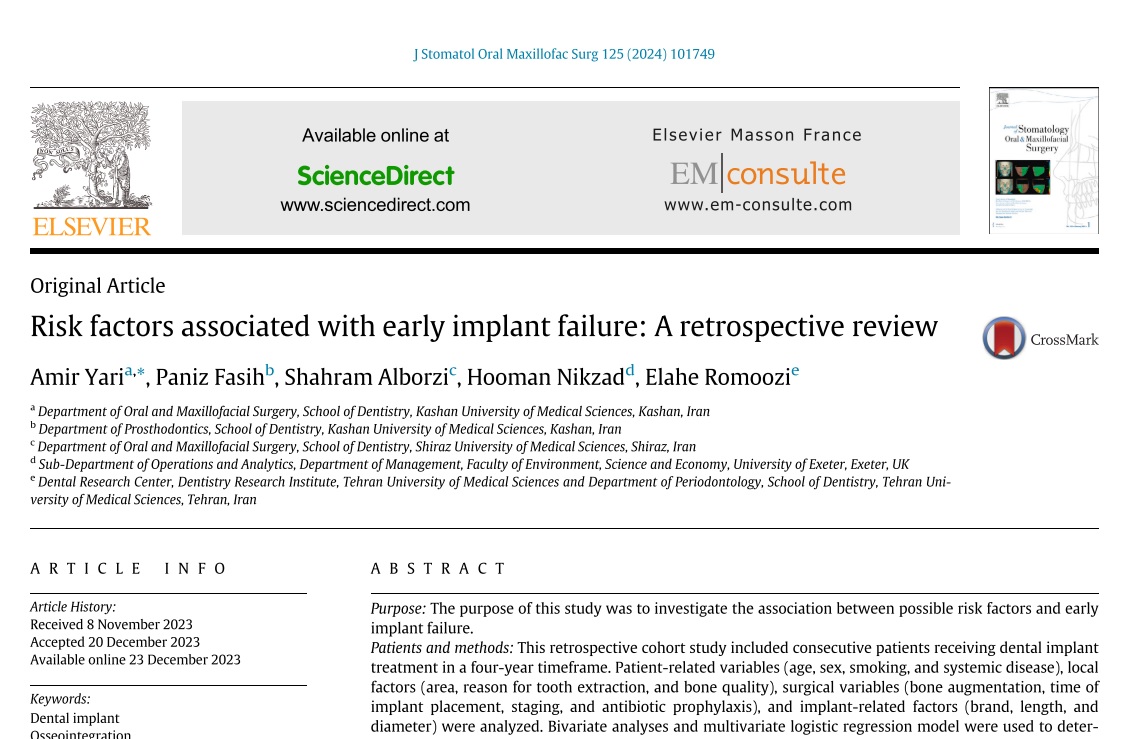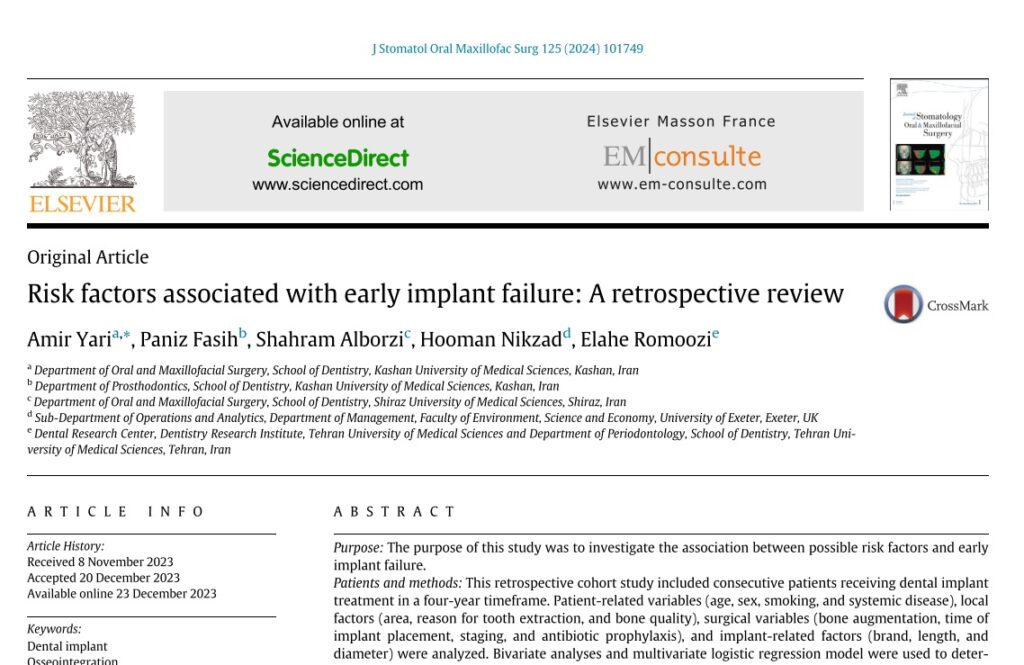
Abstract
Purpose
The purpose of this study was to investigate the association between possible risk factors and early implant failure.
Patients and methods
This retrospective cohort study included consecutive patients receiving dental implant treatment in a four-year timeframe. Patient-related variables (age, sex, smoking, and systemic disease), local factors (area, reason for tooth extraction, and bone quality), surgical variables (bone augmentation, time of implant placement, staging, and antibiotic prophylaxis), and implant-related factors (brand, length, and diameter) were analyzed. Bivariate analyses and multivariate logistic regression models were used to determine the variables associated with early implant failure.
Results
The study group comprised 1323 implants in 738 patients with a mean of 1.8 implants/patient of which, 53 failed in 52 patients in the early stage (before final prosthetic loading). According to the multivariate model, smoking (Odds Ratio=1.836, P=0.031), posterior maxillary region (OR=2.958, P=0.006), implantation in place of teeth extracted due to periodontal problems (OR=2.531, P=0.004), bone type IV (OR=2.881, P=0.008), implant in previously augmented site (OR=2.239, P=0.014), and immediate provisional prosthesis (OR=3.418, P=0.019) were associated with a significantly higher risk of early implant failure. Narrow implants showed a significantly higher risk of early failure in bivariate analyses (P=0.012). However, the effect was no longer significant in the multivariate model (OR=2.322, P=0.068).
Conclusion
Early implant failure would be more expected in smokers, posterior maxilla, history of periodontal problems, type IV bone, augmented bone, and immediately loaded cases.
